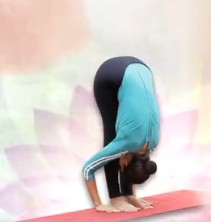New Delhi, May 11 (IANS). The ancient cultural heritage yoga of India has become synonymous with physical and mental health globally today. Padhastasana Yoga is an important part of this rich tradition. Padhastasana is understood to be associated with “foot” (foot “(foot) and” hand “(hand) in Sanskrit, which is an important process of yoga.
In this posture, the seeker tries to touch or hold the feet with his hands, which leads to the upper part of the body downwards. Padhastasana has a special place in the ancient Indian yoga tradition and is considered beneficial for physical, mental and spiritual health.
Padhastasana is included in the tradition of Hatha Yoga, which is considered to be helpful in balanced the energy (soul) of the body and in Kundalini Jagran. The practice of this asana connects the seeker to the earth element, because the head is brought towards the ground. The action of bending the head down is considered to be the process of reducing the ego and calming the mind. The ancient sages believed that regular practice leads to meditation and samadhi of the seeker.
Yogis believed that this asana stimulates the Muladhar Chakra located in the base of the spine, leading to the flow of spiritual energy upwards. This process leads the seeker to high consciousness, which paves the way for the ultimate goal of yoga.
According to ancient belief, Padhastasana has been a part of Surya Namaskar, which was done to accept the energy of the Sun and increase the life power in the body. Yogis believed that this asana activates the Manipur Chakra (Nabhi Chakra), which is the center of confidence, digestive power and energy. Also, it provides emotional stability by balanceing the Swadhisthana Chakra (sharp cycle).
Padhastasana is part of the ancient tradition of Hatha Yoga, which is mentioned in texts like Hatha Yoga Pradeepika and Gherand Samhita. In ancient beliefs, it was considered as a posture enhancing “vitality”, which removes the negative energy of the body.
According to an ancient legend, the practice of Padhastasana was started by a yogi when he saw that trees and plants in nature show flexibility with wind. Inspired by this flexibility, he developed this asana, so that humans can also become flexible and balanced like nature. This story reflects the deep association with the nature of Padhastasana.
-IANS
AKS/KR










